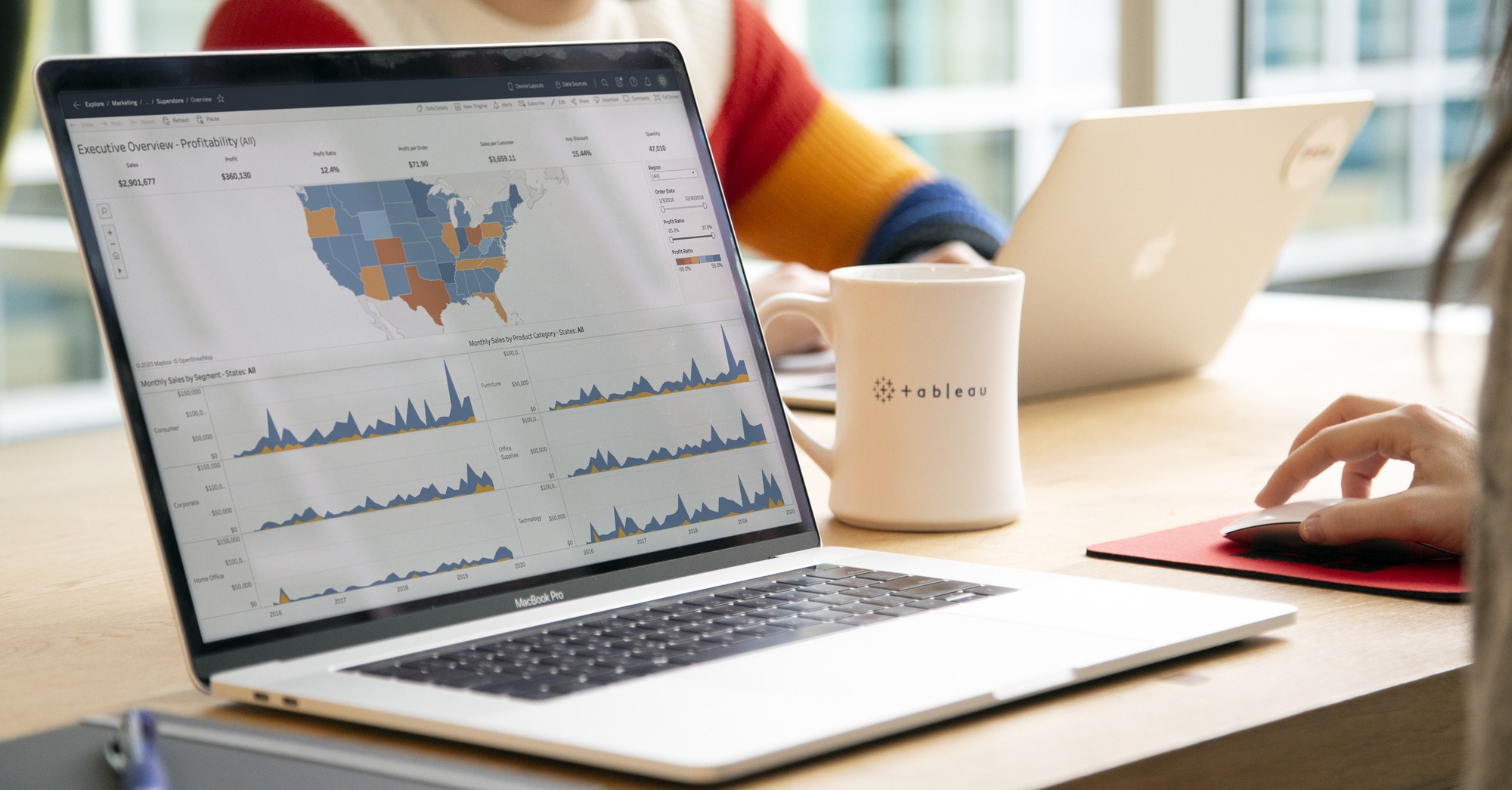Location data, in its essence, is a treasure trove of information about where things happen. It encompasses a wide range of data points, including GPS data, geographic information, and more.
It’s the backbone of applications like interactive maps, mobile apps, and location-based services. But what makes location data truly remarkable is its ability to answer the “where” in many industries.
Whether it’s tracking foot traffic in retail stores, analyzing temperature patterns across geographical boundaries, or even aiding emergency services in close proximity, location data plays a pivotal role.
In simpler terms, location data types help us understand not just what is happening but also where it’s happening. It’s like having a map that reveals the hidden patterns of our world.
By harnessing location data, businesses can gain powerful insights into customer behavior, optimize business operations, and make informed decisions.
It’s a game-changer in today’s data-driven landscape, offering a deep well of information that can fuel growth and innovation.
Understanding the Significance of Location Data
When we talk about location data, it’s essential to understand the various location data types that form the foundation of this field.
Location data types encompass a wide range of information, from geographic coordinates and mapping data to more specific data like mobile location data and spatial analysis.
Types of Location Data
Location data is derived from a multitude of sources, including GPS devices, mobile apps, and remote satellite data. These sources contribute to the rich tapestry of location information available today.
GPS – Navigating Precision
When it comes to pinpoint accuracy, Global Positioning System (GPS) data takes center stage. GPS technology has revolutionized navigation, allowing us to track exact locations with remarkable precision.
Whether you’re using a geospatial mapping app on your smartphone or monitoring fleet vehicles, GPS data provides real-time coordinates that power countless applications.
Mobile Apps – Data in Your Pocket
Mobile apps have become an integral part of our lives, and they also play a significant role in location data. Apps like weather trackers, ride-sharing services, and social media platforms constantly gather information about your whereabouts.
This mobile location data helps personalize your experiences, from providing local recommendations to enhancing location-based services.
Bidstream Data – Bidding for Insights
Bidstream data is a game-changer in the advertising industry. It involves collecting data from ad exchanges and auctions, revealing valuable insights about user behavior.
Advertisers use this data to target specific audiences based on their real-time location, ensuring that ads reach the right people at the right place and time.
Centroids – Mapping the Heart
Centroids are like the heartbeat of geographic data. They represent the center points of specific areas or regions, making them essential for location-based analysis.
Centroid data is used in various applications, from urban planning to logistics optimization, helping businesses make informed decisions.
Beacons – Navigating Proximity
Beacons are small, wireless devices that transmit signals to nearby smartphones or other devices. They are commonly used in retail environments to deliver location-specific content or offers.
Beacon data provides insights into customer behavior within physical spaces, allowing businesses to enhance the in-store experience.
Wi-Fi Data – Connecting the Dots
Wi-Fi data is more than just a means to connect to the internet. It also contributes to location intelligence.
By analyzing Wi-Fi signals and their strengths, businesses can determine the approximate locations of devices. This data is valuable for understanding foot traffic patterns and optimizing store layouts.
POS Data – Transactions with Insights
Point of Sale (POS) data goes beyond recording transactions. It includes information about where purchases occur, enabling businesses to analyze buying behavior geographically.
POS data helps retailers identify their most profitable locations and tailor marketing strategies accordingly.
How to Access Location Data
Obtaining location data involves a series of steps that ensure accuracy and relevance. Here’s a brief guide on accessing this invaluable information:
Data Providers: Start by identifying reliable data providers. These could be GPS services, mobile app platforms, or specialized location data providers. Choose partners that align with your data needs.
Data Licensing: Understand the terms of data licensing. Some data providers offer open access, while others require licensing agreements. Ensure compliance with legal requirements.
Data Collection Tools: Explore the tools available for collecting location data. Mobile apps, IoT devices, and location-based services can be powerful sources. Consider which best suits your objectives.
Privacy Compliance: Stay informed about privacy regulations. Ensure that your data collection practices align with local and international privacy laws, protecting both your organization and your users.
Data Integration: Integrate location data seamlessly into your systems. Effective integration ensures that the data becomes a valuable asset for decision-making.
Data Collection Methods and Techniques
Location data can be collected through various methods and techniques. Some common approaches include:
GPS Tracking: Utilize Global Positioning System (GPS) technology to track and record precise location coordinates. GPS is widely used in navigation and mapping applications.
Mobile Apps: Leverage mobile applications to gather location data from mobile devices. Apps on mobile phones can provide real-time location information and user-generated data.
Wi-Fi and Beacon Technology: Employ Wi-Fi networks and beacon devices to collect data within specific physical locations, such as retail stores. This data can reveal customer behavior patterns.
Satellite Imagery: Access remote satellite data to analyze geographic features, monitor environmental changes, and make informed decisions in various industries.
Legal and Ethical Considerations
While acquiring location data is essential, it comes with legal and ethical responsibilities, which can vary country to country. Here are key considerations:
User Consent: Ensure that users provide informed consent for data collection. Transparency and opt-in/opt-out mechanisms are crucial for ethical data practices.
Privacy Protection: Safeguard user privacy by anonymizing and securing collected data. Comply with data protection regulations like GDPR and CCPA.
Data Usage Policies: Clearly define how collected location data will be used. Avoid data misuse, and respect user expectations and privacy.
Data Retention: Establish data retention policies and delete unnecessary data promptly. This minimizes the risk of data breaches and privacy violations.
Benefits of Using Location Data
Leveraging Location Data for Business
Targeted Marketing: Utilizing location-based insights allows businesses to deliver tailored marketing campaigns to specific geographic regions. This not only increases customer engagement but also boosts conversion rates.
Optimized Operations: Businesses can streamline supply chain logistics, fleet management, and resource allocation by leveraging real-time location data. This optimization not only reduces costs but also enhances overall efficiency.
Customer Insights: Location data helps in understanding customer behavior and preferences based on their physical location. Armed with this knowledge, businesses can tailor their products and services to meet local demands effectively.
Informing Investment Decisions
Real Estate: Investors can evaluate property values, market trends, and investment opportunities with precision by leveraging location data. This leads to informed and profitable real estate decisions.
Market Expansion: Location-based demographics and consumer behavior data provide valuable insights for identifying untapped markets and expansion opportunities. Businesses can confidently expand their operations into new territories.
Risk Assessment: Location-specific factors, such as political stability and regulatory environments, are vital considerations for investment decisions. Location data aids in assessing these risks comprehensively.
Augmenting Competitive Intelligence
Competitor Analysis: By analyzing the geographical footprint and strategies of competitors, businesses can identify areas for market penetration and differentiation. Location data aids in staying one step ahead of the competition.
Market Research: Collecting location-based data offers a deeper understanding of market dynamics, customer preferences, and emerging trends. This knowledge is indispensable for staying relevant and competitive.
Building New Products and Markets
Product Development: Creating location-based services and products that cater to specific needs opens doors to new revenue streams. Location-based innovations are transforming industries and creating fresh opportunities for growth.
Global Expansion: Expanding into international markets becomes more effective with location intelligence insights. Tailoring offerings to local tastes and preferences is made easier, ensuring a successful global expansion strategy.
Detecting and Measuring Change
Environmental Monitoring: Real-time location data aids in tracking changes in environmental factors such as air quality, weather patterns, and pollution levels.This information is crucial for informed decision-making in sustainability efforts. Monitoring sea level is crucial for coastal management and climate studies.
Urban Planning: Location data of geographic location allows city planners to assess urban development and growth patterns accurately. This data is invaluable for making informed decisions regarding infrastructure, transportation, and city planning.
Disaster Response: Quick detection and response to natural disasters or emergencies are made possible by analyzing real-time geographic space data. Lives are saved, and damage is minimized through timely interventions.
Applications of Location Data
Location data has become an invaluable resource in various fields, revolutionizing the way we make decisions, interact with our surroundings, and improve the efficiency of our daily lives.
In this section, we’ll explore some of the key applications of location data that are shaping industries and driving innovation.
It allows businesses to reach consumers at the right place and time, increasing the chances of conversion and boosting ROI.
Location data is rich in various attributes. Demographics, weather, and traffic enrich its value. Big data is transforming location analytics. The sheer volume of data from devices and sources offers insights into consumer behavior.
By analyzing foot traffic patterns and dwell times at specific locations, businesses can tailor their strategies to align with customer needs. Whether it’s optimizing ad placements or fine-tuning product offerings, location data empowers marketers to make informed decisions.
Location-Based Services (LBS)
Location-based services (LBS) have permeated our daily lives. Location data acts as ground truth. It verifies information accuracy for mapping. Dwell time insights enhance marketing and space layout for businesses.
From navigation apps guiding us through traffic to food delivery services finding the fastest route to our doorstep, LBS rely on location data to provide real-time, location-specific information.
These services are not limited to consumer convenience; they extend to various sectors such as healthcare, transportation, and logistics.
For example, LBS provides valuable data that plays a crucial role in emergency response systems, ensuring that help reaches the right location promptly.
Additionally, healthcare providers use location data to track the movement of patients within a hospital, optimizing resource allocation and improving patient care.
Geospatial Analysis and Insights
Location data provides deeper insights into trends. It covers the earth’s surface. Analyzing it leads to informed decision-making and better services.
Geospatial analysis involves examining data with geographic components to uncover hidden insights and patterns. Decimal degrees standardize geographic coordinates, making it easy to work with this data type.
Businesses and government agencies use this technique to enhance decision-making and gain a competitive edge.
Geospatial data can be employed to assess the suitability of locations for new business ventures, plan urban development, and even predict the spread of diseases.
By overlaying spatial features, such as population density, weather patterns, and infrastructure, analysts can identify correlations and trends that might have otherwise gone unnoticed.
Location Intelligence for Business Operations
Location data has become an indispensable asset for businesses across industries. It helps in optimizing supply chains, analyzing customer behavior, and identifying market trends.
From retail stores to multinational corporations, high accuracy in location data helps in making strategic decisions and driving growth. Analyzing catchment areas helps identify growth opportunities for businesses.
Location intelligence is the art of turning raw location data into actionable insights. It empowers businesses to make informed decisions based on spatial patterns, customer behavior, and market trends.
Understanding foot traffic is crucial for optimizing physical businesses. Analyzing patterns helps in enhancing customer engagement.
Location intelligence provides organizations with a comprehensive view of their operations, helping them optimize processes, reduce costs, and enhance customer experiences.
Businesses can track the movement of goods in the supply chain, monitor the performance of distributed assets, and ensure that deliveries reach customers’ doors promptly.
Retailers can identify ideal locations based on factors like foot traffic, demographics, and competitor proximity, leading to more profitable ventures.
Emergency Services and Natural Disasters
One of the critical applications of location data is in the realm of emergency services and natural disasters.
Accurate location data aids in predicting and managing natural calamities. It enables authorities to plan timely evacuations, allocate resources efficiently, and coordinate disaster relief efforts effectively.
Emergency services use it to pinpoint the exact location of incidents and dispatch help accordingly.
In cases of natural disasters like hurricanes or wildfires, authorities can track their progression and plan evacuations with precision.
Additionally, location data aids in disaster preparedness and response planning. By analyzing historical data and modeling potential scenarios, organizations can detect patterns and better understand the impact of disasters.
Unlock the Potential of Location Data with GeoIQ
Location data has become an indispensable resource for businesses and organizations seeking to gain a competitive edge.
GeoIQ is your trusted partner in navigating the complex world of location data. With their expertise, cutting-edge technology, and commitment to delivering value.
They can help you harness the power of location data to make informed decisions, optimize operations, and drive growth. It is one of the preferred location data companies even by data scientists.
GeoIQ’s Location Data Services
At GeoIQ, we offer a comprehensive suite of location data services designed to meet the diverse needs of businesses and industries. It provides geographic information systems that collect location data, vector data, mobility data, foot traffic data, poi data and all essential data point.
Data Aggregation
GeoIQ aggregates and compiles vast datasets from various sources, ensuring that you have access to comprehensive and accurate location data.
Data Enrichment
We enhance raw location data by adding contextual information, such as points of interest, weather conditions, and demographic data. Data visualizations help in better analysis.
Customized Solutions
GeoIQ understands that different industries have unique requirements. Our team collaborates with clients to create tailored solutions that address specific challenges and goals.
Real-Time Analytics
Leveraging advanced geospatial analysis tools, GeoIQ provides real-time insights that enable timely decision-making. Whether you need to monitor live events or track assets, our solutions have you covered.
User-Friendly Interfaces:
Our user-friendly interfaces and dashboards make it easy for clients to access, visualize, and interpret location data. We believe in democratizing data to empower everyone within an organization.
Conclusion
GeoIQ is your trusted partner in navigating the complex world of location data. With their expertise, cutting-edge technology, and commitment to delivering value.
They can help you harness the power of location data to make informed decisions, optimize operations, and drive growth. It is one of the preferred location data companies even by data scientists.
Ready to explore the possibilities of location data with GeoIQ? Reach out to us today, and let’s embark on a journey of discovery together. Your data has a story to tell, and we’re here to help you unravel it.




